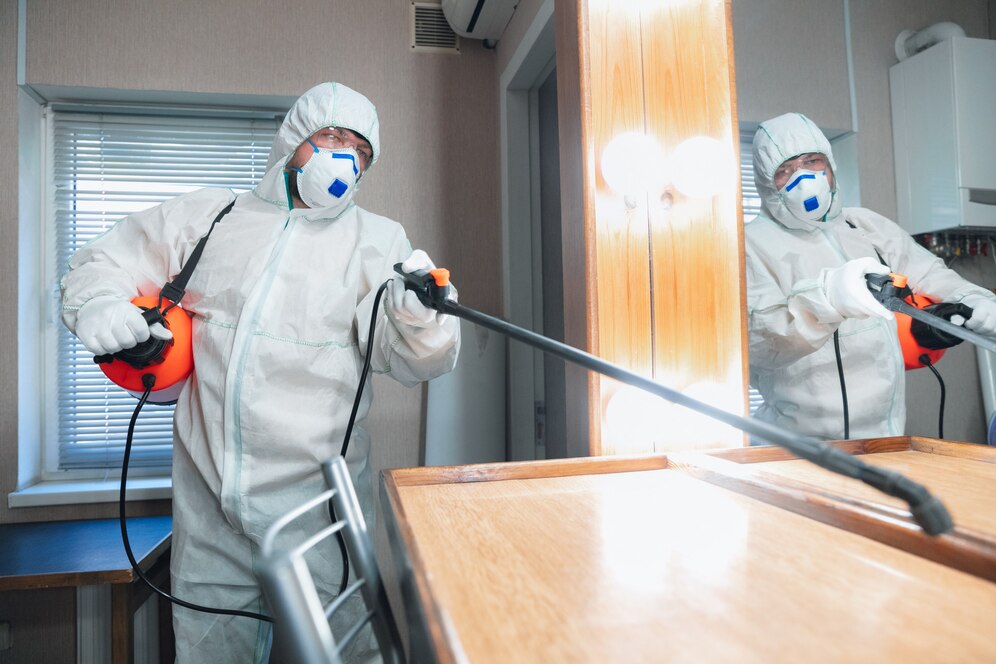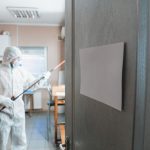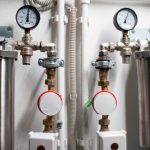Our Address:
Mold growth can cause significant damage to commercial properties and pose health risks to employees and customers. For businesses in St. Petersburg, Clearwater, Tampa, Largo, and Pinellas Park, where humidity levels are high and storm activity is frequent, preventing mold should be a top priority. Implementing proactive measures can save thousands of dollars in repairs and ensure a safe, healthy environment. Below are the best practices for preventing mold growth in commercial properties.
1. Control Humidity Levels
One of the leading causes of mold growth is excessive indoor moisture. In humid climates like Clearwater and Largo, controlling humidity is crucial for preventing mold. Ideally, indoor humidity levels should be kept between 30% and 50%. High humidity levels create the perfect environment for mold to thrive, particularly in poorly ventilated areas like storage rooms, bathrooms, or basements.
To keep humidity under control:
- Install commercial-grade dehumidifiers in areas prone to moisture.
- Regularly monitor humidity levels with hygrometers, especially during the summer months.
- Ensure that HVAC systems are well-maintained and capable of regulating humidity.
Businesses in Tampa and Pinellas Park, where high temperatures and humidity often coexist, should consider using ventilation systems equipped with moisture control technology.
2. Ensure Proper Ventilation
Good air circulation is essential for keeping moisture levels low and preventing mold. Areas with poor airflow, such as kitchens, bathrooms, and storage rooms, are at a higher risk of mold growth. In commercial properties in St. Petersburg or Clearwater, where frequent rain and humidity are common, ensuring proper ventilation can prevent moisture buildup.
- Use exhaust fans in high-moisture areas like bathrooms, kitchens, and laundry rooms.
- Regularly inspect and clean vents to ensure they are functioning properly.
- Open windows and doors periodically to allow fresh air to circulate, especially after humid days.
- Encourage employees to report any issues with ventilation or air circulation.
Commercial properties in Largo or Tampa that rely heavily on air conditioning should ensure that HVAC systems are properly ventilated to prevent condensation buildup, which can encourage mold growth.
3. Address Leaks and Water Damage Immediately
Water damage is a primary contributor to mold problems. Businesses in St. Petersburg and Clearwater, which are prone to storms and hurricanes, must take immediate action when leaks or water damage occur. Mold can begin growing within 24-48 hours of water exposure, so timely intervention is crucial.
- Regularly inspect roofs, walls, and ceilings for signs of leaks or water stains.
- Repair any leaks in plumbing, roofing, or windows as soon as they are detected.
- Dry wet areas immediately after spills, flooding, or leaks. Use industrial fans and dehumidifiers to dry the area thoroughly.
- Remove and replace any materials that cannot be completely dried, such as carpets or ceiling tiles.
In cities like Pinellas Park, where seasonal storms are common, it’s essential to have a water damage response plan in place to mitigate potential mold growth.
4. Regular Maintenance and Inspections
Routine maintenance and inspections are key to preventing mold before it becomes a costly issue. Proactively maintaining your property in Tampa or Largo helps to identify moisture problems early, before they can lead to significant mold growth.
- Schedule regular roof inspections to identify and repair any leaks or vulnerabilities.
- Inspect plumbing systems for leaks or signs of corrosion.
- Clean gutters and downspouts to ensure proper drainage and prevent water buildup around the building’s foundation.
- Regularly inspect HVAC systems to ensure they are free of blockages and functioning efficiently.
- Check windows and doors for proper seals to prevent water from seeping inside during storms.
Commercial properties in Clearwater or St. Petersburg should focus particularly on areas that are exposed to external moisture, like basements, attics, or areas near windows.
5. Use Mold-Resistant Materials
When renovating or repairing parts of your commercial building, especially in high-moisture areas like Clearwater or Tampa, use mold-resistant building materials. These products are designed to reduce the likelihood of mold growth in humid or wet environments.
- Mold-resistant drywall and insulation are excellent choices for high-humidity areas.
- Use moisture-resistant paints in bathrooms, kitchens, and other damp areas.
- Opt for flooring materials that don’t easily absorb moisture, such as ceramic tiles or vinyl, rather than carpets in moisture-prone areas.
- Seal any cracks in walls, windows, or foundations to prevent water from infiltrating.
In cities like Largo, where high humidity can persist year-round, investing in mold-resistant materials is a cost-effective solution to long-term mold prevention.
6. Clean and Maintain HVAC Systems
HVAC systems can harbor mold spores and contribute to poor indoor air quality if not maintained properly. Mold growth in HVAC systems can quickly spread throughout your property, leading to a larger, more costly issue. In warm, humid cities like St. Petersburg and Tampa, maintaining your HVAC system is critical.
- Regularly change air filters to prevent mold spores from circulating through the system.
- Schedule regular HVAC inspections and cleanings to ensure mold isn’t growing in ducts or vents.
- Keep the HVAC system free of dust and moisture by ensuring proper drainage.
- Consider installing UV lights within the system to kill mold spores before they can circulate.
7. Ensure Proper Drainage Around the Building
Water pooling around the foundation of your building can lead to seepage, moisture buildup, and eventually mold. In cities like Clearwater and Pinellas Park, where storms are frequent, it’s crucial to ensure that your building has proper drainage systems in place.
- Ensure that the ground around the building slopes away from the foundation to prevent water from collecting.
- Install French drains or sump pumps in areas prone to flooding.
- Keep gutters and downspouts clean and in good working condition to channel water away from the building.
- Regularly inspect the foundation for cracks or signs of water damage, and address any issues immediately.
8. Educate Employees on Mold Prevention
Prevention isn’t just the responsibility of the property owner—employees also play a role in keeping the building mold-free. Business owners in St. Petersburg, Clearwater, and other nearby cities should educate their staff on the importance of mold prevention and how to spot early signs of mold.
- Encourage employees to report any water leaks, condensation, or musty odors immediately.
- Train cleaning staff to use proper cleaning products and techniques to prevent mold in common areas.
- Ensure that spills and moisture are cleaned up immediately.
- Create a system for regularly checking high-risk areas, such as bathrooms, kitchens, or storage spaces, for signs of moisture or mold.
Preventing mold growth in commercial properties is essential for maintaining a healthy environment and protecting your investment. For businesses in St. Petersburg, Clearwater, Tampa, Largo, and Pinellas Park, where high humidity and water damage are common, proactive measures are key to keeping mold at bay. By controlling moisture, ensuring proper ventilation, addressing leaks immediately, and using mold-resistant materials, you can significantly reduce the risk of mold problems. Following these best practices will help protect your property from costly damage and keep your employees and customers safe.





